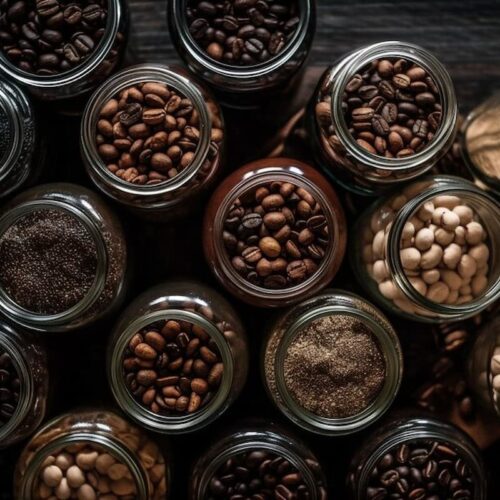Deep in the heart of Ethiopia lies one of the most fascinating coffee-growing regions in the world: Yirgacheffe.
Known for producing some of the highest-quality Arabica coffee beans, Yirgacheffe is also home to wild coffee forests where coffee plants grow naturally without human intervention.
This unique environment allows for the cultivation of coffee that retains its original, untamed characteristics, offering flavors that are unparalleled in the specialty coffee industry.
Yirgacheffe coffee has gained global recognition for its delicate floral aroma, bright acidity, and complex flavor profile.
But beyond its taste, the story of Yirgacheffe’s wild coffee is one of tradition, conservation, and the ongoing fight to preserve Ethiopia’s coffee heritage.
In this article, we will explore the history, cultivation methods, flavor profile, conservation challenges, and the role of Yirgacheffe in shaping the global coffee industry.
The Birthplace of Arabica Coffee
Ethiopia is widely recognized as the birthplace of Coffea arabica, the species responsible for the majority of coffee consumed worldwide.
The montane rainforests of Ethiopia contain a rich genetic diversity of coffee plants, with thousands of unique strains growing naturally.
This genetic diversity is crucial for the coffee industry, as it provides the potential for disease-resistant and climate-resilient coffee varieties.
Many of the coffee plants growing in Ethiopia’s wild forests have never been cultivated on a large scale, making them an untapped resource for future generations of coffee farmers.
Yirgacheffe is one of the most famous coffee-growing regions in Ethiopia, renowned for both its cultivated and wild coffee.
The forests surrounding Yirgacheffe provide the perfect environment for coffee to grow naturally, shaded by tall indigenous trees and nurtured by nutrient-rich soil.
Traditional Cultivation Practices
In Yirgacheffe, coffee is not just a crop; it is an integral part of the culture and daily life of the local communities.
Farmers in the region rely on traditional, sustainable cultivation methods that have been passed down for generations.
Unlike large-scale coffee plantations that rely on artificial irrigation and chemical fertilizers, Yirgacheffe coffee is grown in harmony with nature.
There are three primary coffee cultivation systems in Ethiopia: forest coffee, semi-forest coffee, and garden coffee.
Forest coffee refers to coffee plants that grow entirely in the wild, without any human intervention.
Semi-forest coffee is grown with minimal management, where farmers selectively prune and clear undergrowth to encourage better yields.
Garden coffee is cultivated near homes and managed more intensively, but still relies on organic farming practices.
These traditional methods preserve biodiversity and ensure that Yirgacheffe coffee maintains its distinctive characteristics.
Flavor Profile of Yirgacheffe Coffee
Yirgacheffe coffee is prized for its bright acidity, tea-like body, and intricate flavor notes.
Unlike the bold, chocolatey flavors found in South American coffees, Yirgacheffe beans offer a delicate, floral experience.
The most common tasting notes include jasmine, bergamot, citrus, and stone fruits like peach and apricot.
Depending on the processing method, the flavor profile of Yirgacheffe coffee can vary significantly.
Washed (wet-processed) Yirgacheffe coffee tends to have a cleaner, more refined taste with high acidity and floral overtones.
Natural (dry-processed) Yirgacheffe coffee, on the other hand, is fruitier and has a heavier body due to the extended contact between the beans and coffee cherry during drying.
The Role of Water and Altitude in Yirgacheffe’s Coffee Quality
The altitude and water quality in Yirgacheffe play a significant role in shaping the final taste of its coffee.
Yirgacheffe is one of the highest coffee-growing regions in the world, with elevations ranging from 1,700 to 2,200 meters above sea level.
At these altitudes, coffee cherries mature more slowly, allowing for greater sugar development and more complex flavors.
Additionally, the region’s natural springs provide clean, mineral-rich water that enhances the fermentation process during wet processing.
These factors contribute to the exceptional clarity and depth of flavor that Yirgacheffe coffee is known for.
Challenges and Conservation Efforts
Despite its status as one of the world’s most sought-after coffees, Yirgacheffe coffee faces multiple challenges.
Deforestation, climate change, and increasing demand for agricultural land threaten the delicate ecosystem where wild coffee thrives.
Many coffee forests in Ethiopia have already been lost to development, reducing the availability of wild coffee plants.
Conservation programs, such as the Yayu Coffee Forest Biosphere Reserve, aim to protect Ethiopia’s coffee heritage by promoting sustainable farming practices and preserving forest coffee.
Local farmers play a crucial role in these efforts, as their traditional knowledge is key to maintaining the delicate balance between coffee cultivation and environmental preservation.
The Global Influence of Yirgacheffe Coffee
Yirgacheffe’s coffee has had a significant impact on the global coffee industry.
Its unique flavor profile has set a high standard for specialty coffee, influencing the way coffee is evaluated and appreciated worldwide.
Many third-wave coffee roasters prioritize sourcing Yirgacheffe beans due to their complexity and versatility in brewing methods.
Additionally, research into Ethiopia’s wild coffee varieties is helping scientists and farmers develop new strains that are more resistant to climate change and disease.
The future of coffee may depend on the preservation of Ethiopia’s wild coffee forests and the knowledge held by the farmers who cultivate them.
How to Brew Yirgacheffe Coffee for the Best Experience
To fully appreciate the delicate flavors of Yirgacheffe coffee, it is important to use the right brewing methods.
Pour-over methods, such as V60 or Chemex, highlight the bright acidity and floral notes of Yirgacheffe beans.
French press brewing enhances the body and texture of the coffee while maintaining its intricate flavors.
Cold brew is another excellent option for Yirgacheffe coffee, as it accentuates its natural sweetness and fruitiness.
Regardless of the method used, freshly grinding the beans and using high-quality, filtered water will ensure the best results.
The Economic Impact of Yirgacheffe Coffee on Local Communities
Yirgacheffe coffee is not just a symbol of Ethiopia’s coffee heritage—it is also a vital source of income for thousands of small-scale farmers.
The region’s economy heavily depends on coffee cultivation, with many families relying on coffee production as their primary livelihood.
Because Yirgacheffe coffee is highly sought after in the specialty coffee market, it often commands higher prices than conventional coffee varieties.
However, despite its premium status, many farmers still face financial instability due to fluctuating global coffee prices.
Programs that promote fair trade and direct trade practices help ensure that farmers receive fair compensation for their work.
By reducing the number of intermediaries and creating direct partnerships between farmers and specialty coffee roasters, these programs provide more stable income streams.
Additionally, investments in infrastructure, such as better roads and modern processing stations, can help improve the quality of Yirgacheffe coffee and increase its market value.
Supporting Yirgacheffe coffee not only preserves Ethiopia’s coffee traditions but also contributes to the well-being of the communities that cultivate these exceptional beans.
The Role of Yirgacheffe Coffee in the Specialty Coffee Movement
Yirgacheffe coffee has played a significant role in shaping the global specialty coffee movement.
Its unique flavor profile and high-quality processing standards have made it a favorite among third-wave coffee roasters and consumers.
The specialty coffee movement places a strong emphasis on traceability, sustainability, and brewing techniques that highlight the natural characteristics of each coffee bean.
Yirgacheffe’s floral and citrusy notes, combined with its clean and vibrant acidity, make it an ideal candidate for pour-over methods and single-origin espresso.
Many specialty coffee shops highlight Yirgacheffe beans on their menus, showcasing different roast levels and brewing techniques to bring out the best in the coffee.
Additionally, Yirgacheffe coffee has become a benchmark for evaluating high-quality African coffees, influencing how other coffee-producing regions approach processing and marketing.
As demand for specialty coffee continues to grow, Yirgacheffe remains at the forefront of the movement, setting the standard for excellence in coffee cultivation.
Conclusion
Yirgacheffe coffee represents the rich history and biodiversity of Ethiopia’s coffee culture.
Its wild coffee forests offer a glimpse into coffee’s untamed origins, providing beans with unmatched complexity and depth.
As challenges like deforestation and climate change threaten these forests, conservation efforts and sustainable practices become more important than ever.
By supporting Yirgacheffe coffee and its farmers, coffee lovers can help preserve one of the most treasured coffee-growing regions in the world.
Whether enjoyed as a delicate pour-over or a rich espresso, Yirgacheffe coffee is a testament to the beauty of coffee grown in its most natural state.




